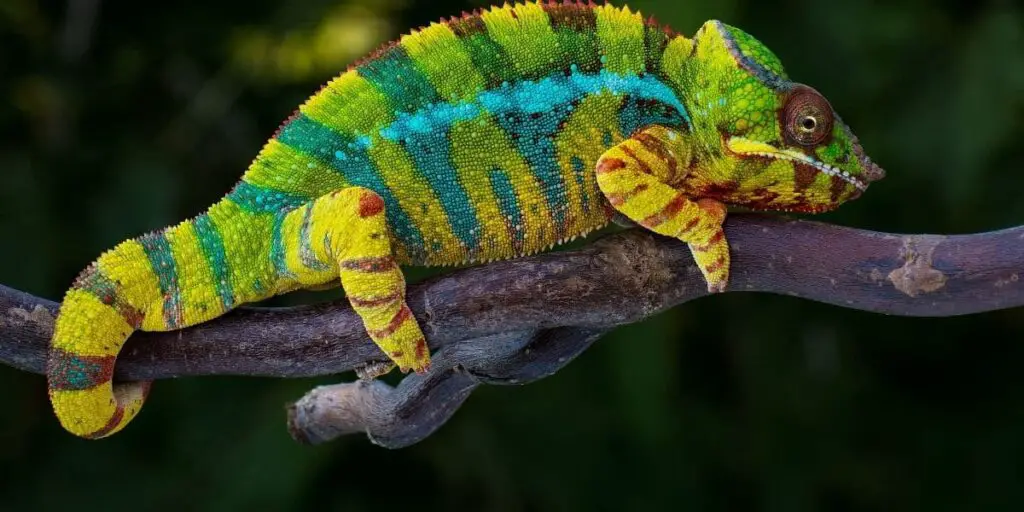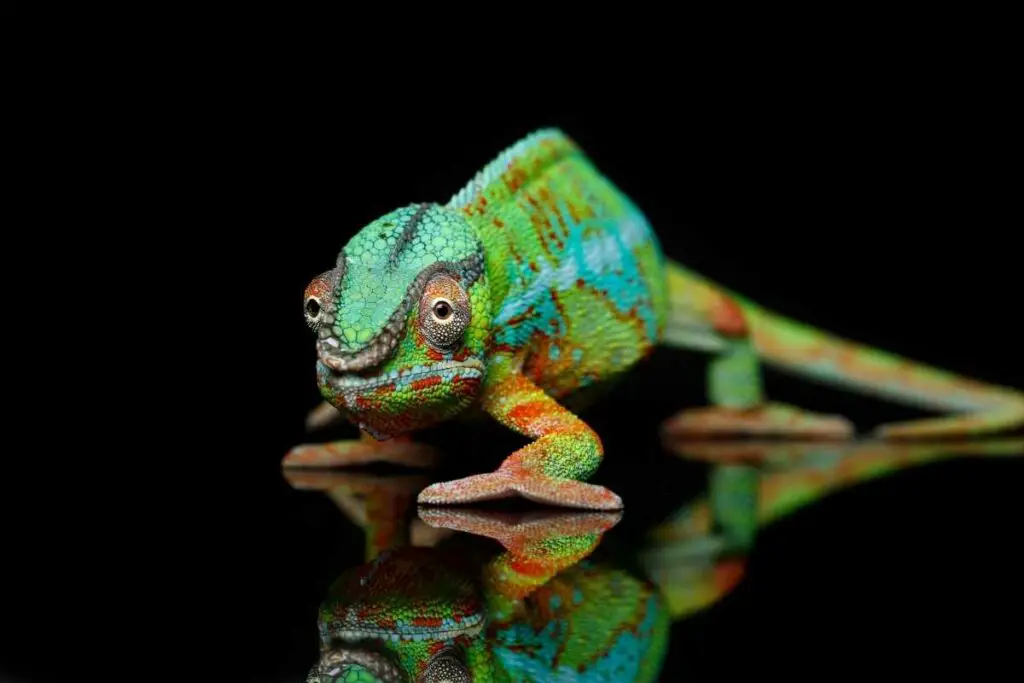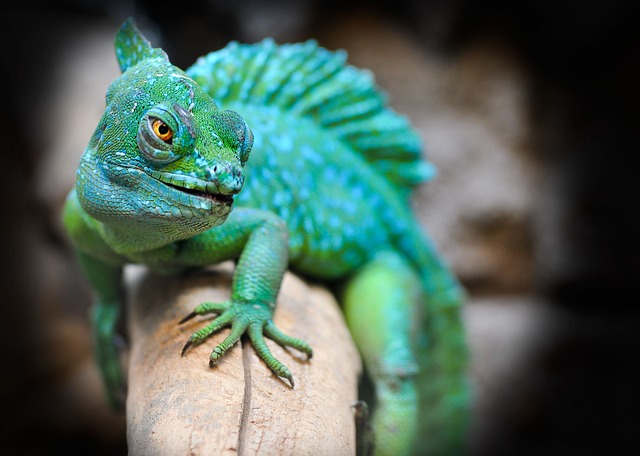One of the biggest attractions of owning a chameleon is the fact that these beautiful critters can change color. It’s one of the things they are so well known for, along with that long sticky tongue!
But did you know that not all chameleons can change color as well as others; there are some that switch between a few natural hues and others that have a much brighter color spectrum.
But do panther chameleons change color?
Panther chameleons are among some of the most radical color changers in the animal kingdom. In mere minutes, they can go from a muted brown to a bright blue and then to a rich red. The male panther chameleon tends to have much brighter colors than his female counterpart.
If you are keen to get a pet chameleon with drastic color-changing abilities, we would strongly suggest the panther chameleon.
In this article, we will be exploring how and why these amazing animals change color and how you tell your pet’s mood through their color display.
Panther Chamelon Coloration
The panther chameleon is native to the African island of Madagascar. What’s interesting is that, depending on their location on the island, these animals display different colors and you will find that most of the chameleon colors are named after these locations.
Male panther chameleons tend to have a much brighter and more varied range of colors than the females as well as being much larger than them.
They can grow to almost 13 inches bigger than the females.
But not only do they have a wide range of colors, the panther chameleons also exhibit a number of different patterns. These colors and patterns will change with their mood as well as the situation that the animal finds itself in.
How Do Panther Chameleons Change Color?
Watching your panther chameleon change color will never get old. This is one of the main attractions for reptile lovers and is often what pushes them to take on one of these incredible creatures.
But have you ever wondered how your panther chameleon manages to change its colors?
Well apparently, you aren’t alone and scientists were keen to find out what causes this color change.
They discovered that it’s all to do with anatomy. Chameleons are unique in that they have two additional layers underneath the skin that feature iridescent cells.

These are known as iridophore cells and these are what enable the animal to alter its color. Not only are these cells filled with pigments but they also reflect light which is essential in displaying color in any situation.
These cells are considered to be nanocrystals and when they are closer together, the chameleon takes on contrasts that rely on blue color wavelengths.
This typically happens when the animal is calm. Conversely, when the animal becomes excited, these nanocrystals spread further apart and reflect red and yellow light waves.
What Do The Different Chameleon Colors Mean?
The panther chameleon will change color according to its mood and its current situation. However, as we mentioned earlier on, these animals vary in their base color in accordance with where in Madagascar they are from.
For example, the Nosy Be chameleons have bodies that can range between deep green and turquoise. They tend to have yellow or white lips and their eye turrets are usually red or gold.
However, the Diego Sanchez variety comes in a variety of red-based colors like orange and some feature green spots. Ambanja chameleons are much lighter and their bodies can be anywhere between blue and green. They also have dark red or purple markings.
When a chameleon is displaying, this is when he will make the most drastic color changes. When males are interacting with other males they will display their most vibrant colors in a display that says ‘Hey, back off.
I’m more powerful than you.’ Instead of trying to blend in with their surroundings, panther chameleons will go all out to ensure they stand out as much as possible.
The same can be said when males are attempting to impress a potential mate.
During breeding season, chameleons of both sexes will use their color changing abilities to grab attention with males putting on the most incredible displays.

That said, the females will give them a run for their money if they are receptive to the male’s advances. This lets him know that he has found a willing mate.
What’s very interesting is that, once mating is over, the female will take on a unique coloration that lets other males know she is no longer available. Typically, this will be a neutral color like black but some females will also display pink or orange stripes.
On the other hand, when they find themselves in a predator-prey situation, the panther chameleon will display its most neutral colors.
Another way to understand what your chameleon is feeling when he displays certain colors is to think about his mood. Normally, your chameleon will display his regular colors but when he is excited or worked up, these will change dramatically.
Again, the changes will depend on the geographical location of the chameleon with Ankaramy chams turning a beautiful pink color. It is for this reason that they are often called pink panthers.
If your chameleon is feeling stressed then it will alter its colors again. Normally, he is likely to display dark vertical bars along his body and sometimes down onto the tail.
However, when stressed, these bars become extremely faint, sometimes they cannot be seen at all. The tail may also curl up when he is stressed so this is another good indication of his mood.
Conclusion
The panther chameleon is one of the most visually appealing of all cham species. This is owing to the fact that they have the most interesting color changing abilities and come in a wide range of vibrant hues.
These animals will change color according to their mood and during situations like mating and moments of stress or excitement.




